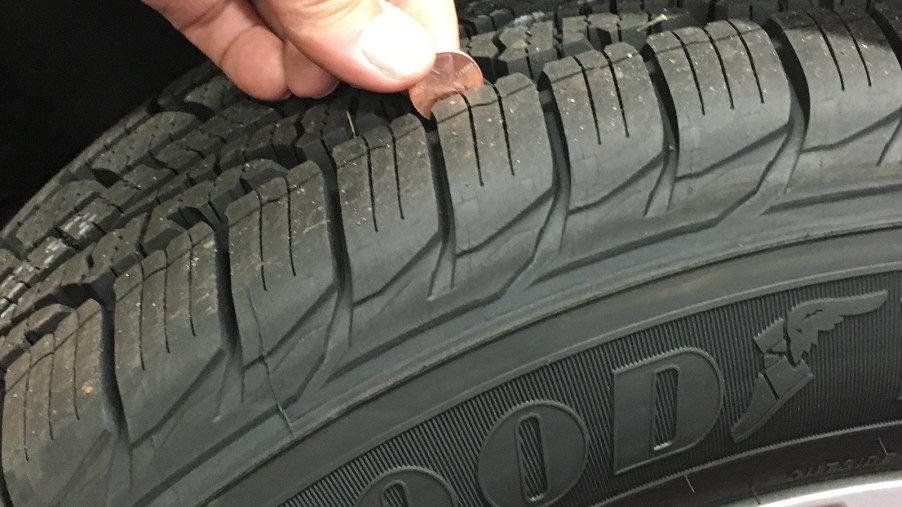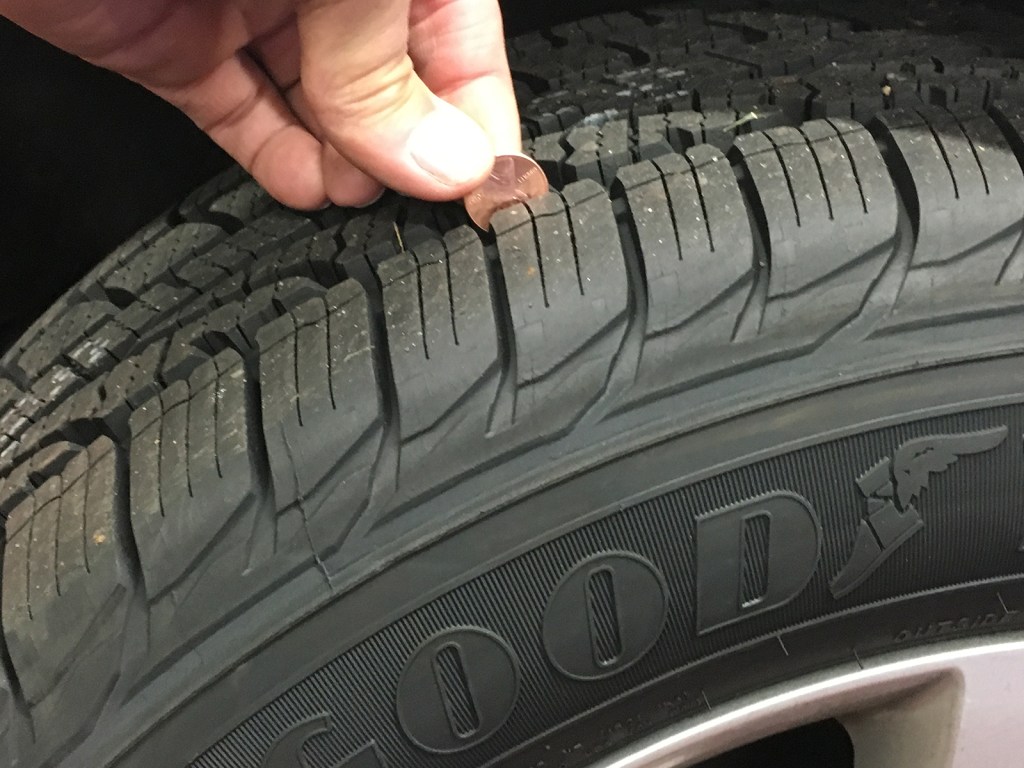
How to Use the Penny Test to Check Your Tire Depth
Many drivers obsess over the safety acumen of different models. Which car has the most cutting-edge driver-assistance technologies? Which vehicles earned the best crash-test scores? But do you pay enough attention to your car’s tires?
Most people remember to check their tire pressure or have their vehicle’s tires rotated when bringing it to the auto shop. But keeping track of each tire’s tread depth is just as vital. Thankfully, there’s an easy way to do this at home, and all you’ll need is a typical penny.
The Penny Test is an age-old indicator of when it’s time to purchase new tires, and it’s not time-consuming to conduct.
Here, we’ll teach you the simple steps on what you need to do and what to look out for, so you can get back to driving safely.
What is the Penny Test?

It can be tough to tell when you need new tires just by eyeing the tread depth. Thankfully, the Penny Test is easy to understand and perform.
The National Highway Traffic Safety Administration (NHTSA) recommends this process for measuring tread depth. The government-backed organization’s reasoning is simple. You should replace your tire once its tread is worn down to around 2/32 of an inch. Oddly enough, pennies make the perfect measuring tool.
How so? Simply hold a penny upside down, making sure Abraham Lincoln’s head is facing the ground. Place the penny into your tire’s tread depth with ‘ol Honest Abe facing toward you. If you can see the very top of Lincoln’s head, then it’s time to buy new tires.
Why is driving with low tire tread dangerous?
You can do all the research in the world to determine the best tires on the market. But once the tread wears all the way down, your car will be a slippery mess.
According to Consumer Reports, worn tires don’t offer as much grip to the road. This harsh wear can lead to serious safety hazards, such as an increased risk of hydroplaning and slippage on wet or snow-covered roads. Additionally, you’ll experience longer stopping distances than usual.
But don’t let these dangers keep you up at night. Getting in the habit of doing the Penny Test every few months and replacing your tires when needed can help you avoid a ton of stress.
Notably, the publication stated that worn tires actually deliver better grip on “bone-dry” pavement. This oddity is due to more rubber meeting the road, and it explains why certain sports cars use tires with less tread.
However, we don’t recommend attempting to use low-tread tires on your daily driver, as it poses a significant safety risk.
How to make your tires last longer
One way to get the most out of your tires is to bring your car to a mechanic for routine wheel balance and alignment and tire rotation services. Your vehicle’s tires don’t always wear evenly, and this can cause you to have to buy new tires earlier than expected.
However, having your car undergo these maintenance processes helps promote even tire wear. Like the Penny Test, you should make routine auto services a habit.
As a general rule of thumb, the NHTSA recommends scheduling a tire rotation every 5,000-8,000 miles. However, it’s always best to consult your model’s owner’s manual and stick to the manufacturer-recommended service intervals.
Proper inflation can also extend the life of your tires. You can find the appropriate PSI for your car’s tires in the owner’s manual or on the driver’s side door frame.
These steps may seem like a lot of work, but they could save you significant money in the long run.
In addition to assisting even tire wear, these services help your vehicle achieve maximum fuel efficiency and more agile handling. For instance, NHTSA data states that properly inflated tires can save drivers up to 11 cents per gallon of gas.


